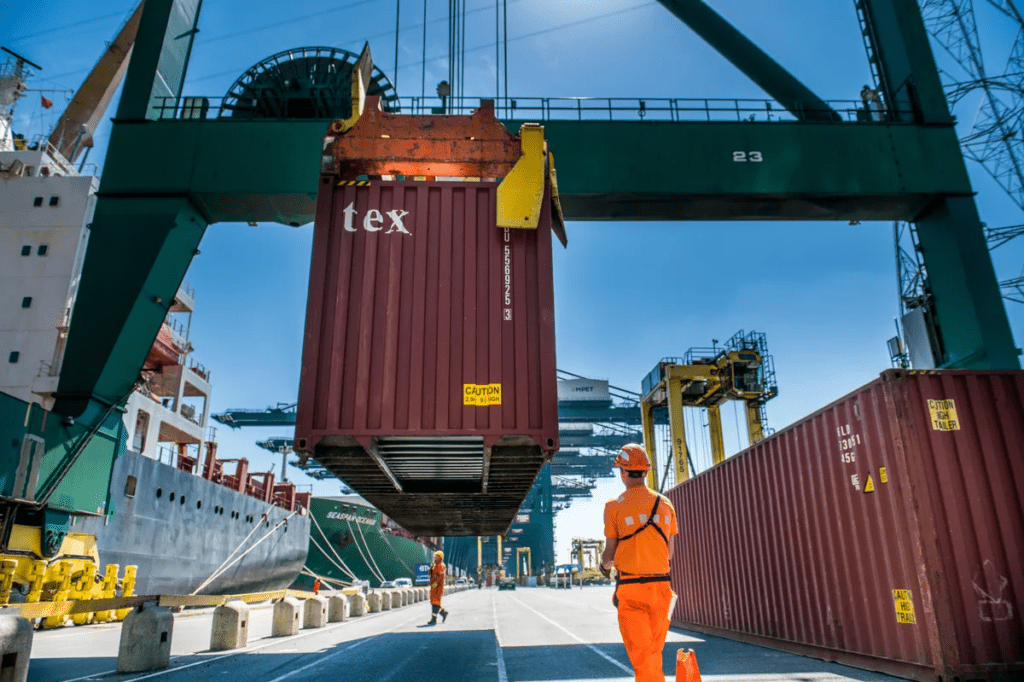A recent study that looked at counterfeiting in shipping containers ranked Belgium as one of the top ten ports of entry for fake goods in the European Union.
“Belgium is high on the list of destination ports because Antwerp and Zeebrugge are among the major ports in Europe,” Christian Archambeau, Executive Director of the European Observatory on the Infringement of Intellectual Property Rights (EUIPO), told The Brussels Times.
Archambeau, a Belgian national and graduate of the University of Brussels, was appointed Executive Director by the European Union in 2018.
“All types of counterfeit goods are shipped by sea,” he says. “But while fake products in containers account for a relatively low number of global seizures, these products tend to be of high value, such as electronic equipment or leather goods.”
Toys are also high on the list, especially around Christmas time, as well as cosmetics, perfumes, clothing, shoes, and handbags. In the case of cosmetics or pharmaceuticals, a counterfeit product can be particularly dangerous.
With more and more people buying items online, the chances of getting a fake product are increasing, and with Antwerp serving as a top port of entry, the chance that a counterfeit good passes through Belgium is also high.
Less than 2% of the containers that arrive in European ports are physically inspected, making it an ideal method of transport for organised crime.
Last summer, the discovery of a secret “hell-like” prison with a torture chamber made from containers near the Belgian-Dutch border made international news.
“We know from other reports that much of the profit goes to organised crime and is used to support illegal activities including drug and people trafficking,” said Archambeau, adding that this is why it’s vital for law enforcement to “keep up the pressure to prevent this important channel being misused.”
Related News
- EU blocks shipment of 250,000 AstraZeneca vaccines to Australia
- Crime in first half of 2020 up 8% thanks to lockdown
- Twice as many reports of price gouging during the epidemic
Still, the report says that illicit trade in counterfeit goods hasn’t been a high priority for customs. Shipments of counterfeits are commonly marked as “commercial trade infractions” rather than criminal activity.
“Consequently, existing enforcement efforts may not be adequately tailored to respond to this risk,” says the EUIPO.
More than half of the total value of counterfeit goods seized is shipped in containers, and global trade in counterfeit goods amounted to €460 billion in 2016, or around 3.3% of global trade.
“Slightly over 50% of all the containers from five major provenance countries of counterfeits by sea transport entered Europe in 2016 through four ports: Rotterdam, Hamburg, Felixstowe and Antwerp,” Archambeau explains. “However, Antwerp is the only top port in which the share of the inward transport from the main counterfeit-producing countries is lower than its share in the overall container transport.”
The five major counterfeiting countries are China, Hong Kong (China), Singapore, the United Arab Emirates, and Turkey. China is the main source of counterfeit goods shipped by container, accounting for 79% of the total value of counterfeit goods seized from them worldwide.
Last year Antwerp handled 231 million tonnes of cargo, making it the second-largest port in Europe (after Rotterdam), with the second-largest chemicals cluster in the world (after Houston).
But those cargo figures are likely to rise. The merger between the Port of Antwerps and Zeebrugge was finally completed this year after. Zeebrugge alone handled 47 million tonnes of cargo last year, and is one of the largest vehicle ports in the world, as well as having a major terminal for liquid natural gas.

